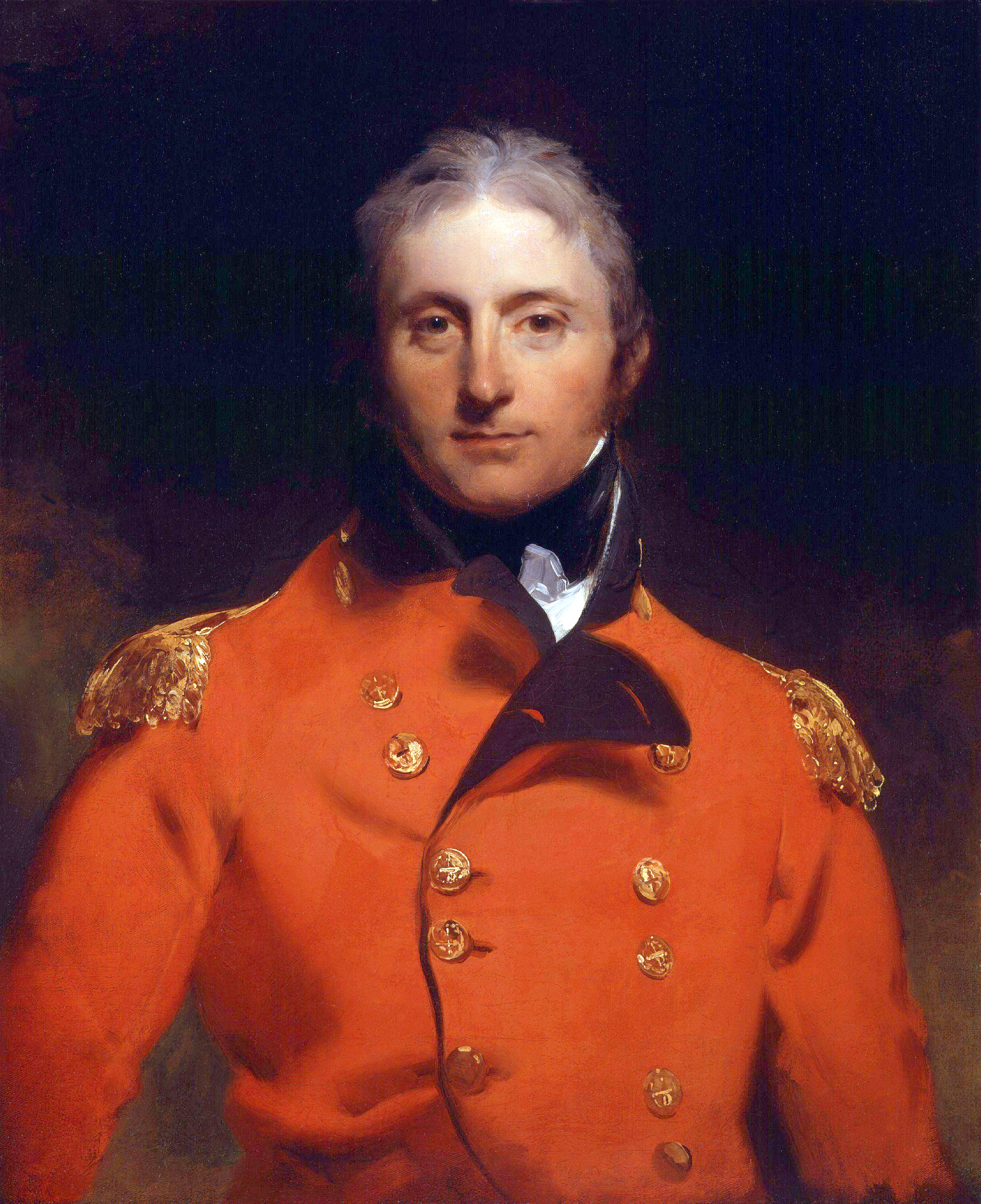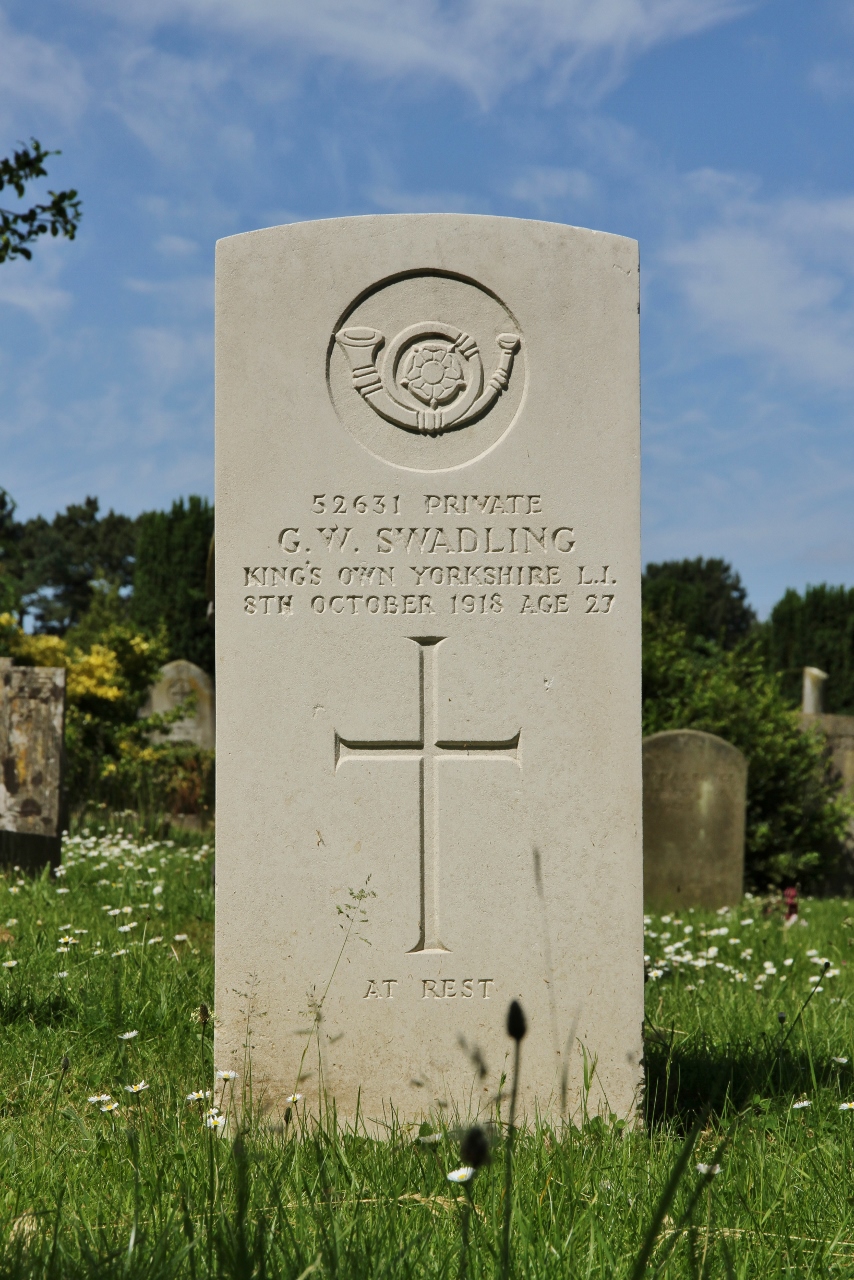|
51st (2nd Yorkshire West Riding) Regiment Of Foot
The 51st (2nd Yorkshire West Riding) Regiment of Foot was a British Army line infantry regiment, raised in 1755. Under the Childers Reforms it amalgamated with the 105th Regiment of Foot (Madras Light Infantry) to form the King's Own Yorkshire Light Infantry in 1881. History Early history The regiment was formed by Lieutenant General Robert Napier as the 53rd (Napier's) Regiment of Foot in 1755 for service in the Seven Years' War. The regiment started out in Exeter but was transferred to Leeds later in the same year. In the space of one month, 800 men had volunteered to serve for three years or as long as the country needed them to. It was re-ranked as the 51st (Brudenell's) Regiment of Foot, following the disbandment of the existing 50th and 51st regiments, in 1757. The regiment's first action was when it embarked on ships and took part in the Raid on Rochefort in September 1757 during the Seven Years' War. The regiment embarked for Germany in 1758 and saw action at th ... [...More Info...] [...Related Items...] OR: [Wikipedia] [Google] [Baidu] |
Infantry Of The Line
Line infantry was the type of infantry that composed the basis of European land armies from the late 17th century to the mid-19th century. Maurice of Nassau and Gustavus Adolphus are generally regarded as its pioneers, while Henri de la Tour d'Auvergne, Vicomte de Turenne, Turenne and Raimondo Montecuccoli, Montecuccoli are closely associated with the post-1648 development of linear infantry tactics. For both battle and parade drill, it consisted of two to four ranks of foot soldiers drawn up side by side in rigid alignment, and thereby maximizing the effect of their firepower. By extension, the term came to be applied to the regular regiments "of the line" as opposed to light infantry, skirmishers, militia, Combat service support, support personnel, plus some other special categories of infantry not focused on heavy front line combat. Linear tactics and function Line infantry mainly used three formations in its battles: the line, the square and the column. With the massive ... [...More Info...] [...Related Items...] OR: [Wikipedia] [Google] [Baidu] |
King's Own Yorkshire Light Infantry
The King's Own Yorkshire Light Infantry (KOYLI) was a light infantry regiment of the British Army. It officially existed from 1881 to 1968, but its predecessors go back to 1755. In 1968, the regiment was amalgamated with the Somerset and Cornwall Light Infantry, the King's Shropshire Light Infantry and the Durham Light Infantry to form The Light Infantry, which in turn was merged with the Devonshire and Dorset Regiment, the Royal Gloucestershire, Berkshire and Wiltshire Regiment and the Royal Green Jackets to become The Rifles in 2007. History The 51st Foot The 53rd Regiment of Foot was raised in Leeds in 1755 and renumbered the 51st in January 1757. In 1782, in common with other regiments of the line, the 51st was given a "county" designation, becoming the 51st (2nd Yorkshire, West Riding) Regiment of Foot. The title of ''Light Infantry'' was given in honour of its former commander General Sir John Moore in 1809, and in 1821 the regiment was given royal status when ''King's Own' ... [...More Info...] [...Related Items...] OR: [Wikipedia] [Google] [Baidu] |
Battle Of Kloster Kampen
The Battle of Kloster Kampen (or Kloster Kamp, or Campen) was a tactical French victory over a British and allied army in the Seven Years' War. The Allied forces were driven from the field. Prelude During the autumn of 1760 Duke Ferdinand of Brunswick, the commander of the allied army saw the French were threatening Hanover. To create a diversion he dispatched 20,000 men command by the Erbprinz of Brunswick to draw the French army away and to the west. The French commander prepared to defend the town of Wesel on the east bank of the Rhine burning the bridge over the Rhine at the mouth of the Lippe while Marquis de Castries hurried with extra reinforcements to relieve the garrison. The Prince of Brunswick set up a formal siege of Wesel building two pontoon bridges over the river. He resolved to meet de Castries' army round the Kloster Kampen area west of the river. Major General George Augustus Eliott commanded the approach vanguard, 2 squadrons of Prussian Hussars, the Royal ... [...More Info...] [...Related Items...] OR: [Wikipedia] [Google] [Baidu] |
Battle Of Warburg
The Battle of Warburg was a battle fought on 31 July 1760 during the Seven Years' War. The battle was a victory for the Hanoverians and the British against a slightly larger French army. The victory meant the Anglo-German allies had successfully defended Westphalia from the French by preventing a crossing of the Diemel River, but were forced to abandon the allied state of Hesse-Kassel to the south. The fortress of Kassel ultimately fell, and would remain in French hands until the final months of the war, when it was finally recaptured by the Anglo-German allies in late 1762. The British general, John Manners, Marquess of Granby, became famous in the battle for charging at the head of the British cavalry and losing his hat and wig during the charge. The French lost 1500 men, killed and wounded, around 2,000 prisoners and ten pieces of artillery. References Bibliography * Chenevix-Trench, Charles, ''A History of Horsemanship'', (Doubleday & Co, 1970) * Skrine, Franci ... [...More Info...] [...Related Items...] OR: [Wikipedia] [Google] [Baidu] |
Battle Of Corbach
The Battle of Corbach, or Korbach, a Hanseatic town of Waldeck-Frankenberg in northern Hesse, Germany, was fought on 10 July 1760 during the Seven Years' War. Corbach was the first battle of the campaign of 1760 and was a victory for the French over the Hanoverians, the British and their allies. Preliminary maneuvers The town of Corbach is sited on the heights of Corbach that rise to some 400 meters above the surrounding plain and extend about one mile east of Corbach to the woods of Berndorf. The main French force under Victor-François, 2nd duc de Broglie marshal of France was about 18 miles to the south at Frankenburg while the main allied force under Ferdinand, Duke of Brunswick was at Sachsenhausen 6 miles to the east. De Broglie had been ordered to advance on Hanover north through Hesse. Corbach itself had been previously seized on 9 July by General Nicolas Luckner, the Hanoverian light cavalry commander, but his small force of 4 squadrons and a battalion of Hessian Jä ... [...More Info...] [...Related Items...] OR: [Wikipedia] [Google] [Baidu] |
Battle Of Minden
The Battle of Minden was a major engagement during the Seven Years' War, fought on 1 August 1759. An Anglo-German army under the overall command of Prussian Field Marshal Ferdinand of Brunswick defeated a French army commanded by Marshal of France, Marquis de Contades. Two years previously, the French had launched a successful invasion of Hanover and attempted to impose an unpopular treaty of peace upon the allied nations of Britain, Hanover and Prussia. After a Prussian victory at Rossbach, and under pressure from Frederick the Great and William Pitt, King George II disavowed the treaty. In 1758, the allies launched a counter-offensive against the French and Saxon forces and drove them back across the Rhine. After the allies failed to defeat the French before reinforcements swelled their retreating army, the French launched a fresh offensive, capturing the fortress of Minden on 10 July. Believing Ferdinand's forces to be over-extended, Contades abandoned his strong posi ... [...More Info...] [...Related Items...] OR: [Wikipedia] [Google] [Baidu] |
Germany
Germany,, officially the Federal Republic of Germany, is a country in Central Europe. It is the second most populous country in Europe after Russia, and the most populous member state of the European Union. Germany is situated between the Baltic and North seas to the north, and the Alps to the south; it covers an area of , with a population of almost 84 million within its 16 constituent states. Germany borders Denmark to the north, Poland and the Czech Republic to the east, Austria and Switzerland to the south, and France, Luxembourg, Belgium, and the Netherlands to the west. The nation's capital and most populous city is Berlin and its financial centre is Frankfurt; the largest urban area is the Ruhr. Various Germanic tribes have inhabited the northern parts of modern Germany since classical antiquity. A region named Germania was documented before AD 100. In 962, the Kingdom of Germany formed the bulk of the Holy Roman Empire. During the 16th ce ... [...More Info...] [...Related Items...] OR: [Wikipedia] [Google] [Baidu] |
Raid On Rochefort
The Raid on Rochefort (or Descent on Rochefort) was a British amphibious attempt to capture the French Atlantic port of Rochefort in September 1757 during the Seven Years' War. The raid pioneered a new tactic of "descents" on the French coast, championed by William Pitt who had taken office a few months earlier. After a number of delays the expedition reached the French coast, capturing the offshore island of Île d'Aix. With the army commander Sir John Mordaunt refusing to attempt a landing, the force sailed for home. The raid ended in failure, but it was followed by several similar operations in the subsequent years. Background Britain had begun the Seven Years' War badly, losing several battles to the French in North America, as well as seeing their major Mediterranean naval base of Menorca captured by a French force while Britain's ally Hanover was faced with a French invasion. In the wake of these losses, a new government including William Pitt came to office in J ... [...More Info...] [...Related Items...] OR: [Wikipedia] [Google] [Baidu] |
Pepperrell's Regiment
The 51st, or Pepperrell's Regiment of Foot was a British Army regiment first raised in 1745. History The regiment was first raised by Sir William Pepperrell in Massachusetts as Sir William Pepperell's Regiment of Foot and ranked as the 66th Regiment of Foot in September 1745. It was disbanded in May 1749. The regiment was re-raised in New England as the 51st Regiment of Foot (Cape Breton Regiment) in December 1754 for service in the French and Indian War The French and Indian War (1754–1763) was a theater of the Seven Years' War, which pitted the North American colonies of the British Empire against those of the French, each side being supported by various Native American tribes. At the ... but, following the disastrous loss of Oswego, it was disbanded in December 1756. References {{Regiments of Foot Infantry regiments of the British Army Military units and formations of the French and Indian War Military units and formations established in 1754 1754 establi ... [...More Info...] [...Related Items...] OR: [Wikipedia] [Google] [Baidu] |
Shirley's Regiment The 50th, or Shirley's Regiment of Foot was a British Army regiment first raised in 1745. History The regiment was first raised by William Shirley in New England as William Shirley's Regiment of Foot and ranked as the 65th Regiment of Foot in September 1745. It was disbanded in May 1749. The regiment was re-raised in New England as the 50th Regiment of Foot (American Provincials) in December 1754 for service in the French and Indian War The French and Indian War (1754–1763) was a theater of the Seven Years' War, which pitted the North American colonies of the British Empire against those of the French, each side being supported by various Native American tribes. At the ... but, following the disastrous loss of Oswego, it was disbanded in December 1756. References Infantry regiments of the British Army Military units and formations of the French and Indian War Military units and formations established in 1754 1754 establishments in the British Empire { ... [...More Info...] [...Related Items...] OR: [Wikipedia] [Google] |



